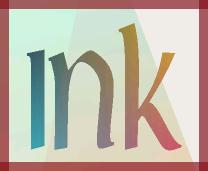|
September 2001
While it is clear that the best OS/2 color inkjet printers for art & photos are the Epson ones, it can really get confusing trying to figure out model numbers and features. For example, the Epson site last night listed 18 currently shipping models, and they are changing all the time. So I thought I'd bring some clarity (well maybe) to the picture. First, unless you're a graphics arts professional or have specialized archival needs, most of the ads for the latest and greatest printer model and features like "2880" dpi and "borderless" printing are just that -- attempts to get you to use newer models that have 'chipped' cartridges that make it harder to use ink refills. From my perspective, there are really three fundamental issues with all these printers. First, 4 color vs. 6 colors. Second is the issue of how sturdy the printers are. Finally, how easy is it to refill/use a continuous inking system. For general use, including photos, the 4 color printers are the best bet. They tend to be faster, are less prone to fading, and ink is cheaper because there is more of each color ink in each of the color cartridge reservoirs (3 colors in the cart vs. 5). On the other hand, if you have a digital camera and want to print out those cool full color photos, particularly of people with their complex flesh tones, then go for a 6 color printer. As for sturdy, you probably already figured out that those under $100 printers are made cheaply compared to the over $200 printers -- there is no free lunch. The only one I will tell you to stay away from is the Epson 1520 (overpriced, old technology with big dot size, and the advertised "17x22 format" really doesn't print anywhere near that big. As to the ink issues, inkjet printer makers these days are selling the printers for cheap and making it up (or trying to) on the ink. if you print a lot, you should consider a CIS or continuous inking system. They are available at places like NoMoreCarts for the 740, 750, 760, 860, 870, 890, 900, 980, 1200, 1270, 1280, 1290, 2000P, and my personal favorite, the 1160. In general, SCOUG members being 'frugal' -- go for the older stuff that you can get the best deal on as you cruise Fry's and MicroCenter, and the other places that you troll. Recently, for example, Micro Center had a deal on refurbished 870's for $50! They didn't last long at that price. They'll work just fine under OS/2. OS/2 Epson printer drivers are quite good, and most Epsons are supported; usually the latest Warp drivers lag behind their Windows counterparts by one revision, which is yet another reason to save money & buy the older models. Also, in my humble opinion, most users aren't going to see the difference between "2880" dpi vs. "1440" dpi for most prints, whereas you will see the difference between 4 and 6 colors. Best resource for all of this is the Epson e-mail list archives at http://home.att.net/ ~arwomack01/. Dynamite site, with tons of links and all the information the printer manufacturers won't tell you about. Also check out http://www.inkjetart.com for all kinds of tips and comparisons of high quality printing. Just to finish off this topic, let me put printing into perspective in the context of scanning. Every time there's a new scanner (usually with one of those cheap problematic USB connectors) they bray about the 4800 or super high resolution scans that it will do (just like 12880 dpi). In reality, for most color work, you are just fine at scan rates of about 240 dpi, and with most print engines you start to simply have the printer drop data much above 720 dpi. The real exception is when you want to scan an image, manipulate a part of the image, and then print out only the smaller manipulated result. Then you would want to scan at 600 dpi or so in order to preserve detail in the cropped image. Otherwise, most folks on the Epson lists talk about 300dpi being just fine, and you don't need a latest greatest scanner for that. Save money -- get an older, SCSI based scanner that will do a real 600 dpi and you won't be sorry. For which ones work with OS/2, check out CFM, the freeware SANE home page, or STI. Until next time, you can reach me at Tony@scoug.com.
By day, Tony Butka is a bureaucrat for Los Angeles County. In his other life he lives in a loft surrounded by computers, printers, and a host of vinyl records.
P.O. Box 26904 Santa Ana, CA 92799-6904, USA Copyright 2001 the Southern California OS/2 User Group. ALL RIGHTS RESERVED. SCOUG, Warp Expo West, and Warpfest are trademarks of the Southern California OS/2 User Group. OS/2, Workplace Shell, and IBM are registered trademarks of International Business Machines Corporation. All other trademarks remain the property of their respective owners. |









